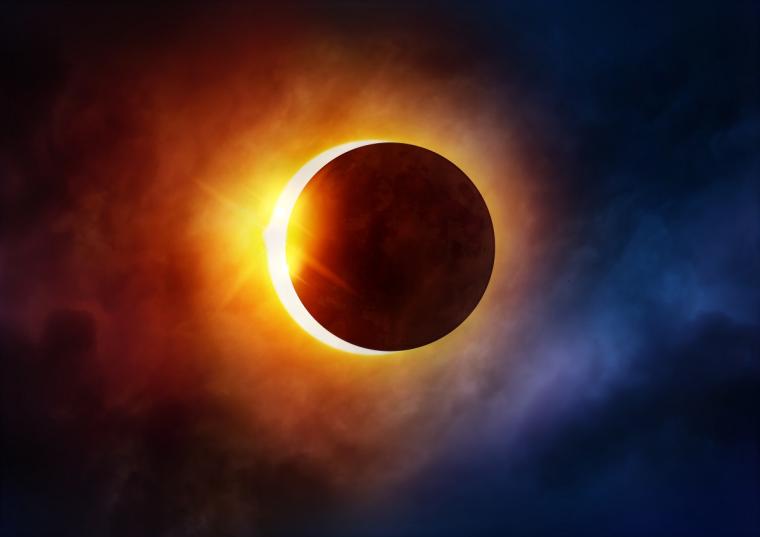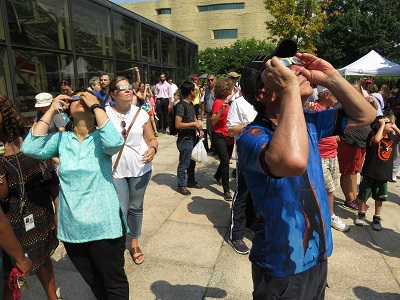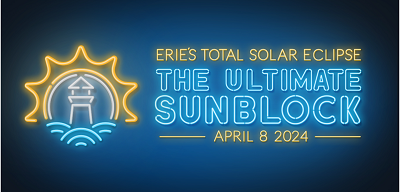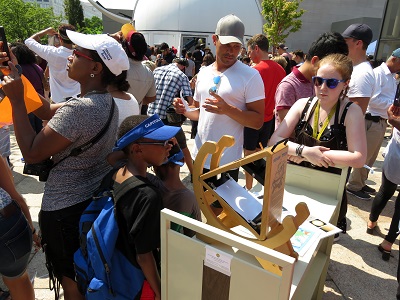
Destinations that are looking for a fun promo officially have 11 months to bring it to light.
The next total solar eclipse rolls around on April 8, 2024, and already, cities are tying in with special events, including sports. During the eclipse, the moon lines up perfectly to obscure the sun, creating what is known as totality. During that time, only the edges of the sun will show around the moon.
A list showing the times the eclipse will be most apparent can be found here.
Nearly everyone in North America will see some part of the eclipse, but only those who live in or travel to the path of totality will experience all stages of this event. That path is a narrow band, approximately 115 miles (185 km) wide, that will cross fifteen states from Texas to Maine. And those states are promoting the daylights out of it.
Cities with special landing pages and promotions include (but are not limited to) the following:
- Erie, Pennsylvania
- Shores and Islands Ohio
- Indianapolis, Indiana
- Hot Springs, Arkansas
- Sandusky, Ohio
- Perrysburg, Ohio
- Kerrville, Texas
- Austin, Texas
- Lake George, New York
- Cleveland, Ohio
- Waco, Texas
- Niagara Falls, New York
- Round Rock, Texas (Presented on YouTube)

And that’s just a few. If you google key words like “convention and visitors bureau solar eclipse 2024,” you’ll find more than one million hits (and it’s likely the list will keep growing; after all, there’s still the better part of a year to go). In many cases, entire states have special landing pages, detailing the events community by community.
There is even a National Eclipse Events website, listing events to be held in states including Texas, Arkansas, Missouri, Illinois, Kentucky, Indiana, Ohio, Pennsylvania, New York, Maine and Vermont. The site also includes events held in cities and states outside the path of totality – and there are plenty of them. (Those who want to add their events can e-mail information to contact@nationaleclipse.com.
And tie-ins are always a good idea because it’s not like these eclipses come around every year. In fact, according to NASA, after 2024, the next total solar eclipse that can be seen from the contiguous United States will be on Aug. 23, 2044. (In other words, promote now or hold your peace for the next 20 years.)
Speaking of NASA, that organization has (of course) a robust landing page devoted to the eclipse; it can be found here, and includes all the details on how eclipses occur (and the various types), how to safely view them and (of course) a map of the eclipse, showing the path of totality.
The last time this happened was, oddly, relatively recently, in August 2017 and destinations and sports events went all-in on the event. In addition to being a great opportunity to promote events that tied in with STEM subjects (Science, Technology, Engineering and Math), it was just a chance to have fun.
How much fun? Too much fun. According to MiLB.com (as quoted in SDM here), several teams hosted promotions for games held on the day of the eclipse. In fact, MiLB was calling it a “total eclipse of the park” (apologies to Bonnie Tyler).

In the blog, PromoWatch, (and yes, there is such a thing), writer Benjamin Hill discussed the phenomenon, noting (at the time in 2017) that the then-upcoming eclipse would be the first coast-to-coast eclipse in the U.S. in nearly 100 years:
“Oregon’s Salem-Keizer Volcanoes Stadium is in the 67-mile wide path of totality, making it an ideal location from which to experience this once-in-a-lifetime event. Therefore, the team has announced a Monday morning ballgame featuring a built-in, first-of-its-kind "eclipse delay."
During the eclipse delay, fans (and the players on the field) wore team-logo eclipse safety glasses (SDM’s note to planners: there’s your idea for a sponsored promo) that allowed them to look straight at the sun as the moon began to obscure it. The start time of the ballgame was morning (the team offered breakfast at the ballpark). At 10:17:21 a.m., near-total darkness occurred as the moon aligned itself between the Earth and the sun. The duration of totality was one minute and 54 seconds, at the conclusion of which a slow return to normalcy began. Within 15 minutes or so, once the skies had sufficiently brightened, the game resumed as if nothing out of the ordinary had even happened.
To get the promotion going meant advance preparations, according to Hill’s blog, which noted:
"We had received our schedule for next season and were thinking of events that tied into our games," said Volcanoes president of business operations Luke Emanuel. "Someone mentioned the eclipse. Two-thirds of the room had no idea, but we did a bunch of research and realized we were in the path of totality. So, we thought, 'How can we capitalize on this, when people can literally walk outside and view it?'"
A consultation with an enthusiastic NASA representative helped the Volcanoes learn the specifics of the phenomenon, which led them to plan the four-day "Eclipsefest" (tagline: Baseball-Brews-Blackout).
 “People are coming in from all over for [the eclipse]. The hotels are already booked, so we're thinking of opening up our parking lot for RVs,” Emanuel said at the time. “And people already come to Oregon for microbrews and wine, so we said, 'How about getting all of these things in one location?' We'll do all the things that make Oregon great, at the best time of year to come visit.”
“People are coming in from all over for [the eclipse]. The hotels are already booked, so we're thinking of opening up our parking lot for RVs,” Emanuel said at the time. “And people already come to Oregon for microbrews and wine, so we said, 'How about getting all of these things in one location?' We'll do all the things that make Oregon great, at the best time of year to come visit.”
For a certain subset of Americans, the intersection of astronomical phenomenon and our national pastime will be hard to resist.
“This is very unique,” Emanuel said. “We're providing not just a chance to experience the eclipse but also to experience the first eclipse delay in baseball history.”
(There were a lot of moving parts to something like this, including getting unorthodox start times and a built-in game delay approved by the parent clubs of both the home and visiting teams.)”
Also in 2017, SDM noted, “Plenty of running event owners have tied in already, with community and club 5Ks; most of these are morning runs. Of course, at least a few are “virtual runs” so that nobody gets sued for retina damage.”
Ben Hill told SDM he is "hoping that all teams in the path of totality are able to schedule games. The issue is that April 8 is a Monday, a now-standardized Minor League off day, so teams have to put in special requests for a game that day and hope it gets approved. I know that some teams, like Erie, are actively working on it. I attended, and extensively covered, the Columbia Fireflies eclipse game in 2017. It was amazing, probably the most memorable moment of my entire career. Hoping to be able to do it again next season!"
The clock is ticking toward April 8, 2024; in fact, nearly every landing page for the event has a countdown calendar for it.
Some destinations have noted that while there are other solar eclipses, the chance to see them in that destination may not come around any time soon. For example, Visit Erie’s site notes, “The center line of the 2024 eclipse passes over Lake Erie near Presque Isle State Park, which means Erie County will experience totality longer than anywhere else in Pennsylvania. The next total solar eclipse to occur in the United States won’t take place until 2044. Erie County won’t be in the path of totality again until 2144, 120 years from now, making this truly a once-in-a-lifetime experience.”
Fun fact: Back in 2017, hotel rooms in many cities within the path of totality had been booked for years; it will be interesting to see if the same phenomenon occurs next year.
Want to start promotions sooner? NASA notes that an entirely separate astronomical event, the Annular Solar Eclipse of 2023, will take place on October 14 and will cross North, Central, and South America. It is predicted to be visible in parts of the United States, Mexico, and many countries in South and Central America; here is a map showing its path and how much of the eclipse will be visible in any given area. Note: In an annular eclipse, the sun is not completely blocked by the moon.

